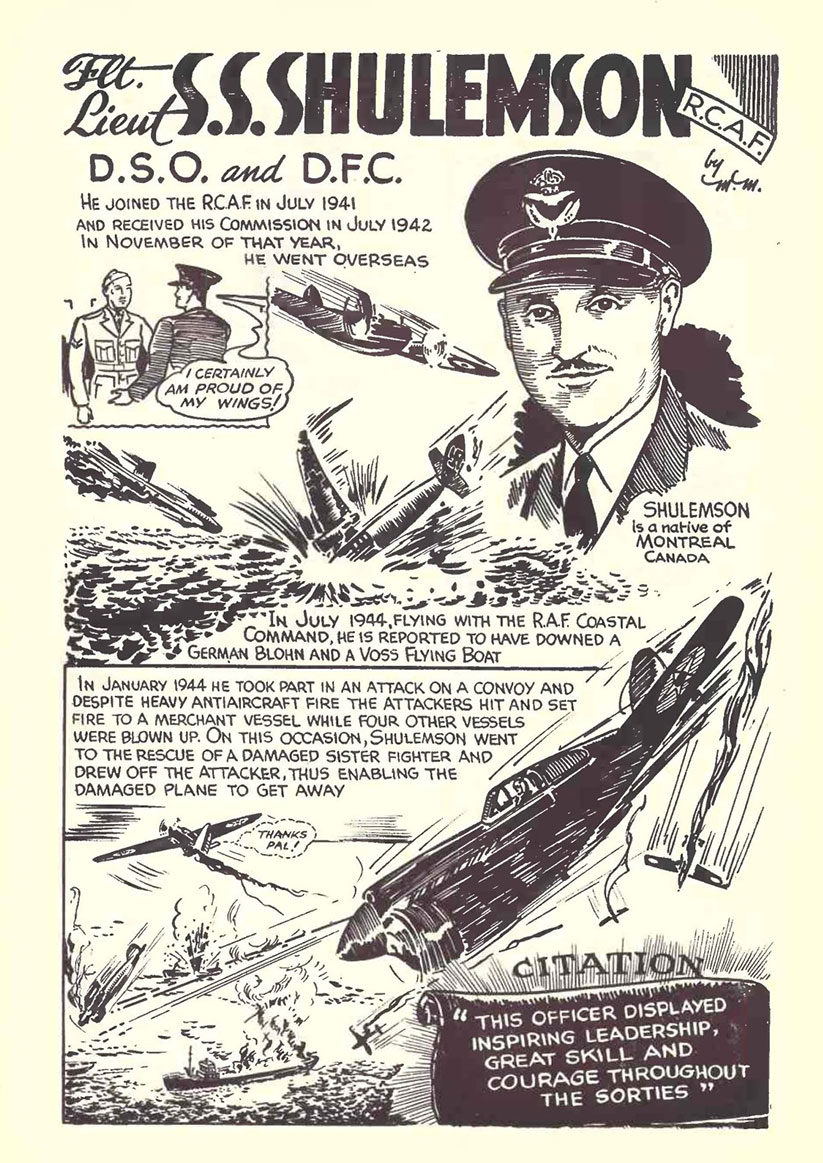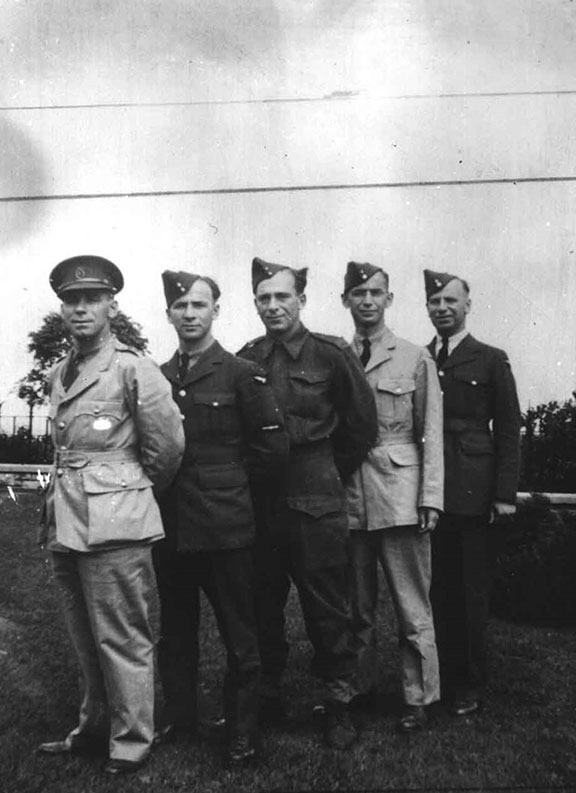History - Jewish Canadian service in the Second World War
Index
Mobilizing on the home front
Many Jewish religious and political leaders in Canada encouraged young members of their community to serve in uniform during the Second World War. They employed a variety of strategies, from public and private exhortations to creative media outreach efforts. The Canadian Jewish Congress, an influential advocacy group that would be active in our country for nearly a century, established its own recruiting offices in Toronto and Montréal and also publicized accounts of heroic Jewish service on the field of battle. In 1944 and 1945, it even released a series of comic books called Jewish War Heroes, which were hoped would hold special appeal to boys and young men. Ultimately there were three editions of this unique publication, with each issue containing eight pages of exciting stories that shone a well-deserved spotlight on the heroism of Jewish service members who were fighting with the Allied forces.
There were also other, less public, pressures to enlist. With relatives often living in occupied Europe, the distant war did not seem as far away as it might have for other Canadians. This connection meant the call to serve felt by many Jewish Canadians could be very personal. While most would serve in our country’s military, men like William Nelson (an ace pilot in Britain’s Royal Air Force) and Robert Mirvish (a radio officer in the United States Merchant Marine) joined the forces of other Allied countries.
More than one million Canadians served on land, at sea and in the air during the Second World War. Similar to their non-Jewish countrymen, about 39 to 40 percent of eligible Jewish men enlisted. Some 280 Jewish Canadian women also served in uniform. Like their male counterparts, they did so for reasons both patriotic and personal. Some of them, including Sue (née Westheimer) Jacobs Ransohoff and Esther (née Bubis) Thorley, had lost a husband or brother during the war and wanted to “take his place” in the struggle against a cruel enemy. Although Canadian women could not serve in combat roles during the conflict, some young Jewish servicewomen would be deployed overseas to support the Allied efforts in Europe—a move that put them within range of enemy action and the danger that entailed.
The Jewish contributions to our country’s war efforts were not limited to service in uniform. Like so many other Canadians, members of the larger Jewish community came together to pitch in on the home front. Many would buy war bonds to help fund the government’s heavy wartime expenditures, as well as raise funds to support their men and women serving overseas in other ways. Canada's Jewish community took on the task of furnishing recreation huts for the men at all military bases in Canada and Newfoundland, including amenities such as pool tables, radios, magazines, cigarette stands and furniture. Under the leadership of Captain Gurston Allen, whose family was in the film business, the Canadian Jewish Congress War Efforts Committee set up a motion picture unit to supply films for the military's training programs and also for entertainment. Samuel Bronfman, president of Seagram’s and president of the Canadian Jewish Congress, donated a yacht to the Royal Canadian Navy reserves to be used for training. It would be called HMCS Montréal ll.
A popular, personal touch for many Canadians was sending care packages with tasty food, warm socks, cigarettes, books and other treats to brighten the days of service members far from home. The Jewish community, encouraged by the Canadian Jewish Congress, made sure its members in uniform would receive some special additions, such as kosher salami and Jewish pamphlets. It is hard to quantify the impact this kind of personal support had but William Rosenthal, a 20-year-old soldier from Montréal, wrote a thank you note during the war that said, “I, or rather we, wonder sometimes whether you people realize how much receipt of your gifts mean to us. Getting mail from you is like seeing that kosher stamp again. Your letters and gifts warm us as no sun has ever warmed the heart of a man. Hearing from you folks is like a breath of spring.”
Jewish Canadians also stepped forward in considerable numbers to work in the greatly expanded war-related industries on the home front. With so many young men off serving in uniform, people from all walks of life had to fill the great void left in the work force in order to produce the weapons, ammunition, warships, airplanes and other important materials that were needed to win the war. Norman Kendall, for example, helped build aircraft at the de Havilland factory in Toronto before joining the air force. George Shnier of Emerson, Manitoba, ran the Gesco company in Toronto, which supplied sponge rubber for use in manufacturing tanks. He was doing his part in the family war effort that also saw three of his brothers, Clifford, Norman and Jack, serve in uniform.
Did you know?
Many large Jewish Canadian families had several of their children enlist during the Second World War. Nathan Feinstein and his younger brother Sam of Inverness, Nova Scotia, both lost their lives. Five brothers from the Olfman family of Kamsack, Saskatchewan, served. Six brothers from the Weiss family in Montréal signed up, while six sons and a daughter of the Hurwitz family of Montréal would also serve in uniform. The Masers of Ottawa also had seven siblings who enlisted during the conflict.
- Date modified:

